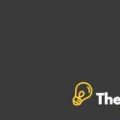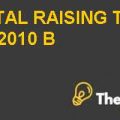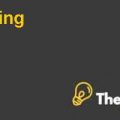
Overview
The Company was formerly known as Au Bon Pain Company Inc., which was founded by Ron Shaich and Louis Kane in 1981. Initially, the company had focused upon the development of a strong restaurant chain in the regional market at different malls, shopping centers, East Coast of the United States and airports. The organization had executed a lot of expansion plans through a number of acquisitions over the past two decades i.e. in 1993; it had purchased Saint Louis Bread Company, which was a chain of 20 bakery-cafes located in the Saint Louis. Soon after that acquisition, the firm was renamed as Panera Bread in all markets except the St. Louis in 1997. Panera Bread cafes were located in the urban, sub-urban, regional malls and strip mall locations featuring high-quality and superior food in a comfortable, inviting and warm environment. The company’s overall operations were dependent upon three core business segments i.e. franchise operations, company bakery-cafe operations and fresh dough manufacturing along with other distribution related operations. The firm had performed very well in the fiscal year 2006 and established about 155 new owned companies and franchised bakery-cafes, which had raised the total number of its units to 1,027 in 36 states. While the company had a plan to increase the number of units by further 170 or 180 numbers in the next year, which was seemed as a difficult task to achieve but management of the firm was confident enough upon their past performance and competencies that they would easily achieve this milestone.
SWOT Analysis
- Strengths: - The Company had made its distinction in the market through excellent customer services, comfortable environment and moderate pricing. It had a well established network of franchises and company owned stores i.e. 1,027 stores in 36 states. The company had competed successfully in five sub-markets of the restaurant and fast food industry i.e. Breakfast, dinner, day time chill out, evening fare for eating and take out lunch through their distinctive menu, sophisticated operating systems, signature café designing, unit location strategy and inviting ambience. The company had a competitive advantage over the rest of the industry of having their own fresh dough manufacturing and distribution facility i.e. a network of 17 fresh dough regional facilities and a fleet of 140 temperature-control trucks. It had a strong customer’s loyalty and brand recognition in the regional as well as international market, which had enhanced the value of the Panera bread brand name. Their average bakery-café was approximately 4,600 square feet, which had a number of areas to get-together and chilling out with a high-speed free WI-FI access.
- Weaknesses: - The Company had designed very tough criteria for franchisees i.e. the organization did not offer unit franchises rather a prospective franchisee had to make a commitment of opening a number of units, minimum 15 bakery-cafes in six years. Although, this move would give an aggressive growth to the company, but most of the willing parties were not able to meet these demands, which resulted in a loss of highly-experienced franchisees. The firm lacked a proper marketing structure, which had limited its exposure to the outside world. The centralized and single unit supplies of dough to different bakery-cafes at remote areas would become difficult for them in the future due to increasing prices of fuel, repair and maintenance expense of trucks. Due to the rapid expansion of company’s operations through company owned bakery-cafes and franchises it would also be difficult for the company to keep a centralized single unit dough supply system.
- Opportunities: - Panera had a number of opportunities for expansion of the regional and global market. With the increasing health consciousness, the demand of healthy food in the market was also increased; Panera could easily expand their customer base because of their healthy menu. The rotating menu of the bakery-cafes would attract new customers in the future and give the company an ever increasing customer loyalty. The company’s catering business, especially supplying food to offices had a high potential for growth and expansion in the market. There was a huge potential of growth and exposure to the firm in its newly adopted G2 café design and it could target high-end customers of different metropolitan areas more closely.
- Threats: - The biggest threat for the organization was the increasing revenues of independent franchises as compared to the company’s owned bakery-cafes. The increasing operating cost, raw material expenses, uncertain customers' behavior and changing seasonal demands were also some of the factors that had exposed the company to high-risk of going concern. The firm was also facing a high risk of increasing competition from the increasing demand of ready-to-eat and ready-to-cook food industry. Due to high geographical coverage and expansion, the company would face a risk of changing regulations regarding copyrights, operations and trademarks.
The SWOT analysis shows that the company has a number of competitive advantages over the rest of the industry, but due to the increasing competition and changing demands of customers it had to concentrate upon the product development rather than going towards the expansion only. It is also evaluated that the company can overcome a number of its weaknesses through integrating a slight change in their marketing strategies and product development efforts. It should revise their criteria for the franchising agreements because such a tough criterion will be.........
This is just a sample partial case solution. Please place the order on the website to order your own originally done case solution.













